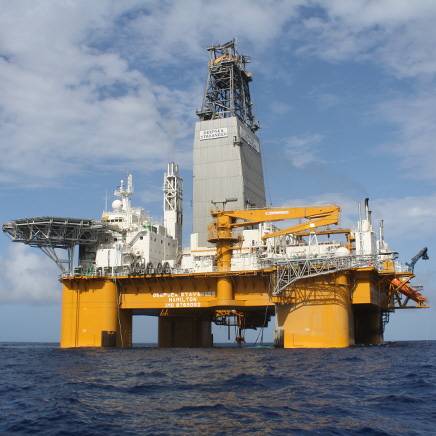
Oil firm Aker BP has come up dry in the Freke-Garm exploration well in the North Sea, the Norwegian Petroleum Directorate said on Tuesday.
The wildcat well 15/6-15 was drilled by the Deepsea Stavanger drilling facility, about 15 kilometers northeast of the Gina Krog field and 225 kilometers west of Stavanger. Water depth at the site is 109 meters.
The exploration well is the first in production licence 814, which was awarded in APA 2015. Operator Aker BP owns a 40% stake, while partners Hungary's MOL and Austria's OMV each hold 30% shares.
The well's primary target was to prove petroleum in reservoir rocks from the Middle Jurassic Age (the Hugin and Sleipner formation). The secondary exploration target was to examine reservoir rocks from the Triassic Age (the Skagerrak formation).
The well was drilled to a vertical depth of 3,761 meters below the sea surface, and was terminated in the Skagerrak formation.
Well 15/6-15 encountered the Sleipner formation with a thickness of about 125 meters, of which 40 meters were reservoir rocks of good to moderate reservoir quality. The Skagerrak formation was encountered with a thickness of about 140 meters, of which 15 meters were reservoir rocks with poor reservoir quality.
Data acquisition and sampling have been carried out, and the well has been characterized as dry.
The well will now be permanently plugged and abandoned.
Deepsea Stavanger will now proceed to production licence 777 in the central part of the North Sea to continue drilling wildcat well 15/6-16 S, where Aker BP is the operator.